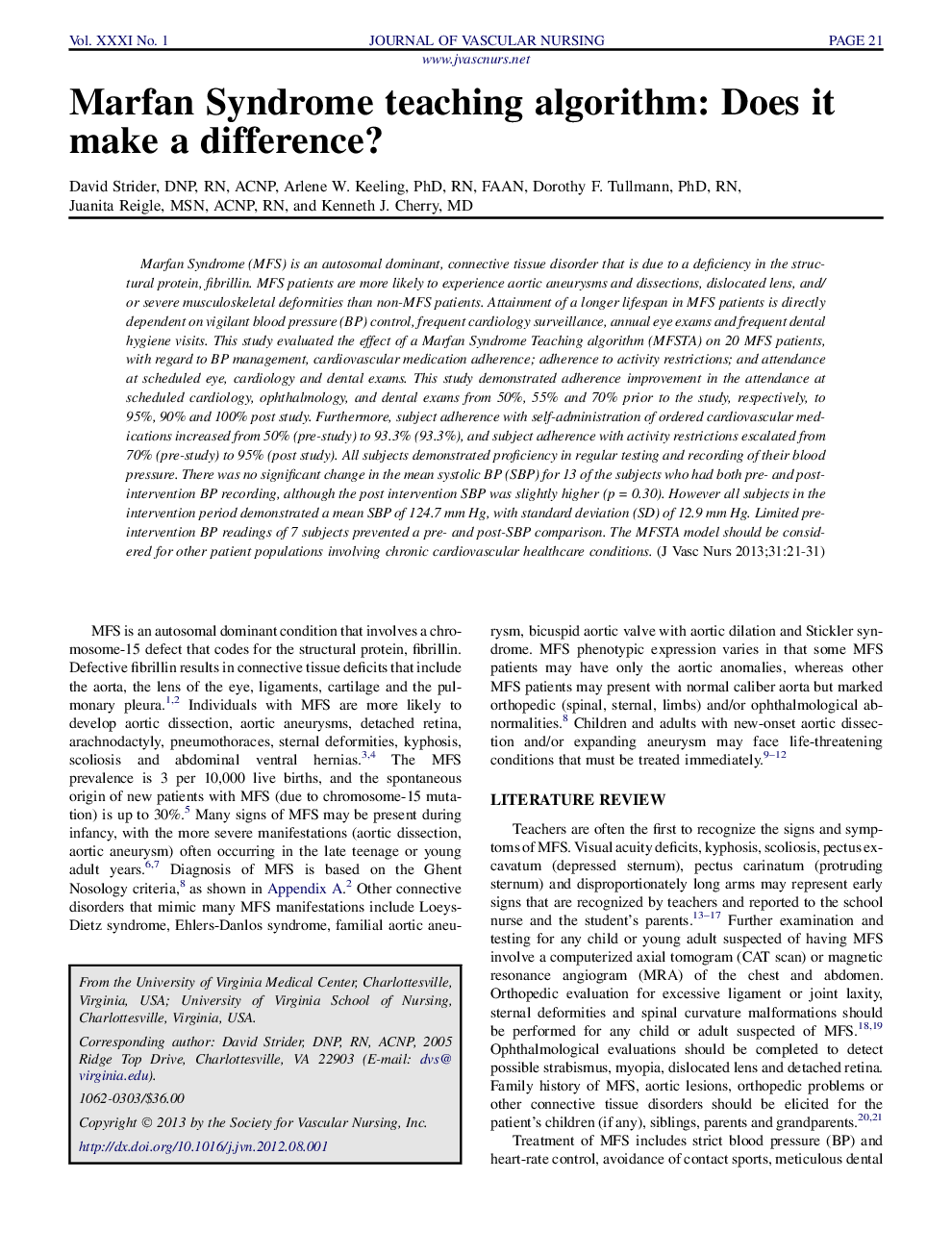| Article ID | Journal | Published Year | Pages | File Type |
|---|---|---|---|---|
| 2672079 | Journal of Vascular Nursing | 2013 | 11 Pages |
Marfan Syndrome (MFS) is an autosomal dominant, connective tissue disorder that is due to a deficiency in the structural protein, fibrillin. MFS patients are more likely to experience aortic aneurysms and dissections, dislocated lens, and/or severe musculoskeletal deformities than non-MFS patients. Attainment of a longer lifespan in MFS patients is directly dependent on vigilant blood pressure (BP) control, frequent cardiology surveillance, annual eye exams and frequent dental hygiene visits. This study evaluated the effect of a Marfan Syndrome Teaching algorithm (MFSTA) on 20 MFS patients, with regard to BP management, cardiovascular medication adherence; adherence to activity restrictions; and attendance at scheduled eye, cardiology and dental exams. This study demonstrated adherence improvement in the attendance at scheduled cardiology, ophthalmology, and dental exams from 50%, 55% and 70% prior to the study, respectively, to 95%, 90% and 100% post study. Furthermore, subject adherence with self-administration of ordered cardiovascular medications increased from 50% (pre-study) to 93.3% (93.3%), and subject adherence with activity restrictions escalated from 70% (pre-study) to 95% (post study). All subjects demonstrated proficiency in regular testing and recording of their blood pressure. There was no significant change in the mean systolic BP (SBP) for 13 of the subjects who had both pre- and post-intervention BP recording, although the post intervention SBP was slightly higher (p = 0.30). However all subjects in the intervention period demonstrated a mean SBP of 124.7 mm Hg, with standard deviation (SD) of 12.9 mm Hg. Limited pre-intervention BP readings of 7 subjects prevented a pre- and post-SBP comparison. The MFSTA model should be considered for other patient populations involving chronic cardiovascular healthcare conditions.
